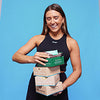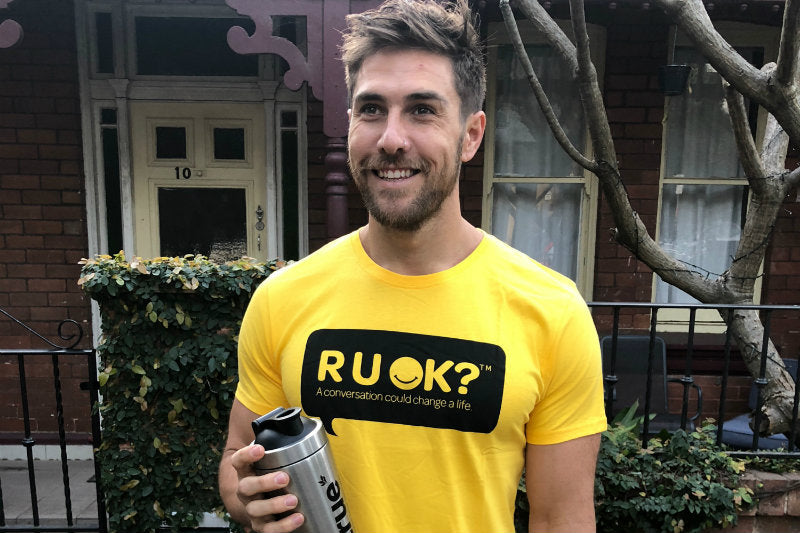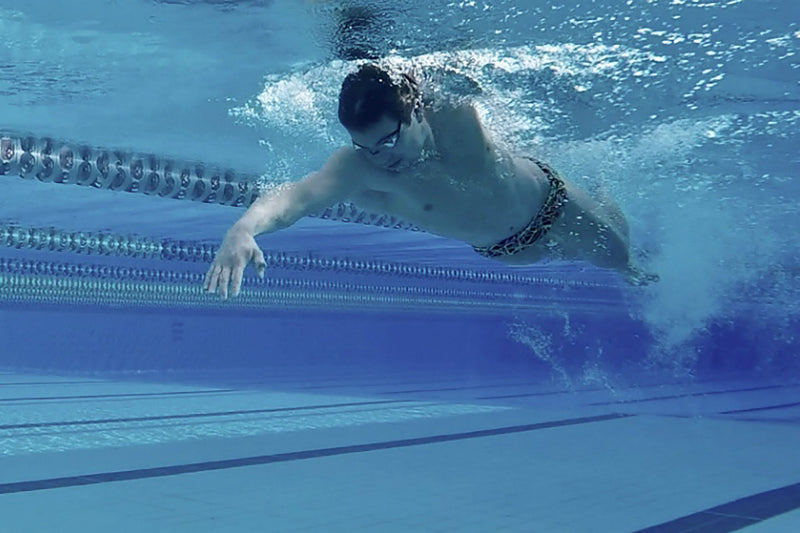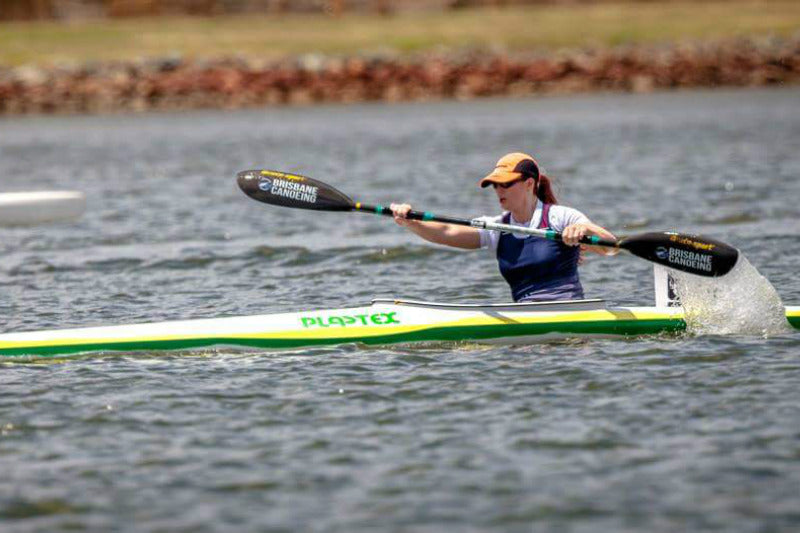For any elite athlete, competitive sport is a daunting, sometimes scary prospect but for Paralympian Mark Altmann, not having all his limbs only made him push harder.
Born without his left arm, an incorrectly formed right arm, missing fingers and later diagnosed with a life-threatening scoliosis curvature of the spine, Mark had the odds stacked against him. Instead of succumbing to his disabilities, Mark was undeterred as he learned to work with them, going on to win Bronze at the 2000 Paralympics, rack up a string of national records and is today mastering the art of paraclimbing.
‘When it comes to sport, I give it all. I want to be the best that I can be and when I get there I want to push harder,’ says Mark.

Born in 1983 on the mid-north coast of Australia, Mark was diagnosed with ‘upper bilateral phocomelia’ – in layman’s terms, a shortening of the upper limbs.
‘I have no left arm and a small left hand with only three fingers. My right arm is not correctly formed, the elbow will not straighten, and I have only four fingers on my right hand,’ Mark explains. ‘Through childhood, I underwent surgery on my right hand to straighten fingers and give me better function. Two of my fingers are fused straight and can’t bend. One finger underwent further surgery to spin it around and create a thumb.'
The youngest of three boys, Mark wasn’t raised as ‘disabled’. He was always encouraged to achieve, bringing great pride to his parents when his first uttered sentence was ‘me do it myself’. From a young age, Mark knew who he was and never liked to be left on the sidelines. Competing against his two older brothers in everything from soccer to canoeing, Mark pushed hard to better his siblings.
‘I remember growing up on five acres with a pool where my brothers and I would hold our own triathlons on weekends for fun. It would go all day, best two out of three, best five out of seven, best out of 10…’ Mark smiles.
With the luxury of a pool close by, the boys took their competitions to the water, swimming and playing water polo whenever they got the chance: ‘I took to the water straight away, spending more time under it than on top!’ says Mark. ‘When I turned 13, I was invited to the Paralympic Preparation Program. My swimming career had begun.’
In 1997, three years before the 2000 Paralympics in Sydney, Mark had some heartbreaking news when a routine check up on his spine revealed a life-threatening 95-degree curvature.
‘I had only just returned from a national championship fit, healthy and with a swag of medals,’ Mark remembers, ‘Then my x-ray was staring back at me with a curve of 95 degrees. I have never seen a doctor so shocked before. To put it into perspective, a scoliosis curve in the spine of 60 degrees is considered life-threatening. My world was shattered.’
With his heart and lungs being crushed by his own body, with no warning signs or symptoms, an operation was vital.
‘As an already disabled athlete with only one arm, my ears no longer processed sound after the doctor advised there was a serious chance I could end up in a wheelchair,’ says Mark.
Unwilling to accept the bad twist of fate, Mark underwent two major spinal surgeries with his sights set on making a full recovery: ‘The hardest part wasn’t the pain, which I was already accustomed to after all my previous surgeries. The hardest thing was, as a teenager, teaching myself to walk, talk and breathe again after each surgery.'
With the unwavering love and support of his family, and 18 months of intensive physiotherapy, Mark persevered day after day. Defying all odds, he walked again. Then he ran. Then he swam.
In just two short years Mark returned to full training and went on to compete in State Titles, winning a phenomenal five gold medals and setting several national records before representing his country for the first time at the 1999 FESPIC Games held in Thailand.
‘I competed at the 2000 Pacific School Games in May. One week later, I was invited to swim at the Telstra Trials with other Olympic and Paralympic hopefuls. I swam a total of 15 races over those three weeks and I set and reset my national records 12 times,’ says Mark. ‘I kept my head, remained focused and kept getting faster. I wanted to make a statement in the pool,’ and make a statement he did.
Three years to the day after Mark was placed on a respirator for his spinal surgeries, he was invited to rejoin the Paralympic Preparation Squad in July of 2000. Signed up to swim a 100-metre breaststroke, 200-metre individual medley and 50-metre butterfly, new challenges soon arose.
‘My local pool wasn't heated in the middle of winter, so it was closed, and my coach had been moved to another pool complex. No pool, no coach and the Paralympic Games just around the corner,’ Mark remembers.
During the next few months, Mark’s family drove him 500km every week to be able to use heated 25-metre pools in surrounding towns.
‘My high school PE teacher lent me a wet suit and we started an endurance program at Crescent Head Beach before school each cold morning in June,' says Mark, 'As a nationally recognised surfer, she knew how to train in the surf to build up my stamina.’
 Successfully competing in the 2000 Paralympics, Mark made it into two finals: ‘When I stood on the blocks for the 50-metre butterfly final I had nothing to lose. I was ranked 9th in the world and 34 seconds later I became the third fastest man in the world. I won a Bronze Medal.’
Successfully competing in the 2000 Paralympics, Mark made it into two finals: ‘When I stood on the blocks for the 50-metre butterfly final I had nothing to lose. I was ranked 9th in the world and 34 seconds later I became the third fastest man in the world. I won a Bronze Medal.’
Now married with two beautiful children, Mark has since set his sights on a new challenge. Climbing.
‘Sport has always been a love of mine. Competing against your peers, pushing each other to become the best you can be. I love it,’ says Mark. ‘I can honestly say I never thought I would be a climber. In my mind, climbing has always been dominantly upper body – think Sylvester Stallone in Cliffhanger doing one arm chin-ups on a massive overhang!
‘From the moment I completed my first climb, I was hooked! I was quickly able to use skills I already had like balance and spatial awareness. I found, with bouldering, that on difficult routes more suited to my strengths I was completing them before able-bodied climbers. But still no one arm chin-ups on overhangs!’ laughs Mark.
Whilst he didn’t have to make many adaptations to swim, climbing brought a brand new set of challenges for Mark. Unable to do the majority of standard or core training climbers usually do – no chin-ups, push-ups or hangboard, Mark started training under the guidance of Australian Climbing Head Coach, Duncan Brown. Together they worked to improve on Mark’s strengths and iron out a few weaknesses, whilst adaptive CrossFit athlete Logan Aldridge helped him put together a deadlift strap, allowing him to attempt new exercises for the first time.

It hasn't taken long for Mark to work his way up the ranks of the climbing world, encouraged to start competing at an elite level after just two years. Signing up to Sports Climbing Australia (SCA), he soon enquired about climbing in the paraclimbing division: ‘I was extremely surprised by the response. SCA didn’t have a paraclimbing division for bouldering!’ says Mark, ‘Not because they don’t allow it but simply because no one has ever asked before. So, I told them, “I’m asking”. They were very excited, encouraging and more than happy to help make it happen.’

Creating an Instagram account (@aussie.paraclimber) to show the world how he manages to climb, Mark competed in the NSW State Bouldering Titles before heading to Perth for Nationals.
‘After Nationals I was the number one ranked paraclimber in bouldering in Australia, says Mark, ‘Now I am very proud to say that I am Australia’s first ever paraclimber to join the newly created Australian Paraclimbing Team!’

What gives him the strength and determination to compete? ‘This is just me being me,’ says Mark, ‘Most importantly, my parents not raising me as a child with a disability but simply as their child. Growing up, in my mind, if there was something I couldn’t do it just meant that I couldn’t do it yet.
‘People inspire me to be better, no matter who they are. From world-leading athletes like Tia-Clair Toomey to the young underdog kid at a local carnival giving their all. Win, lose or draw, athletes who dig deep and put it all on the line without losing their sense of mateship or sportsmanship, they are my inspiration.’
.jpg)




